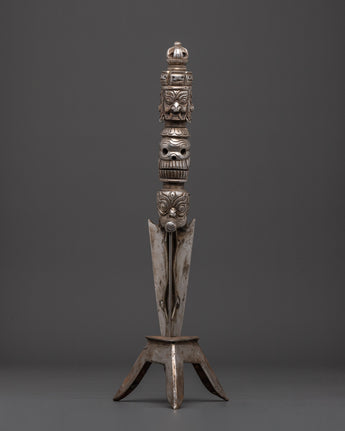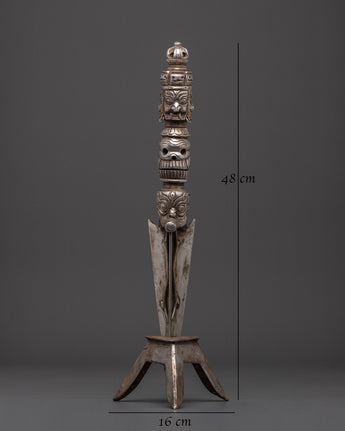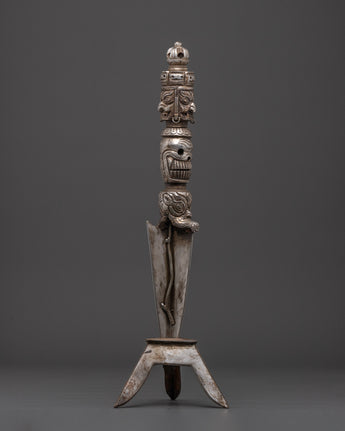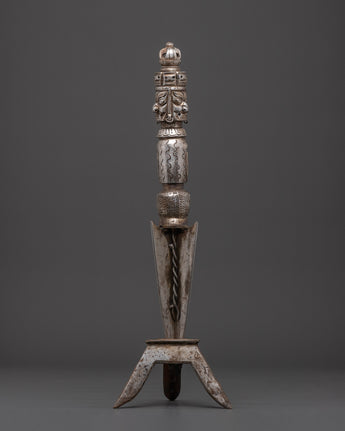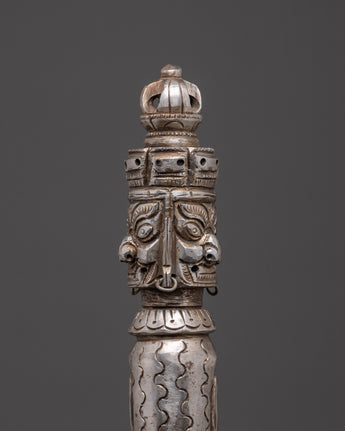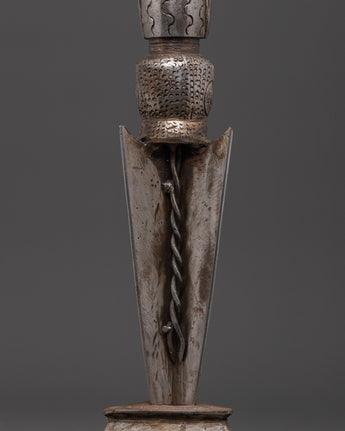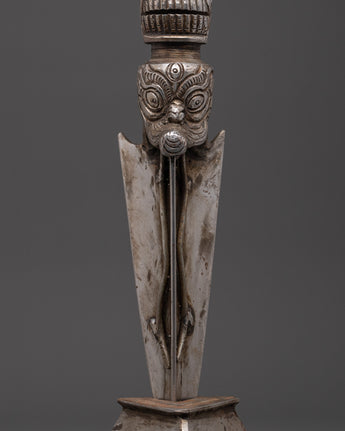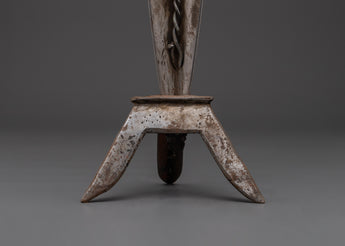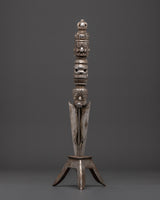
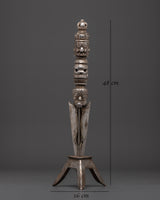
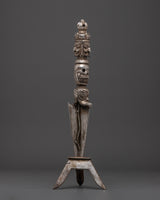
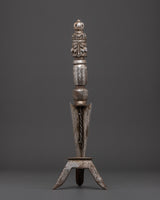
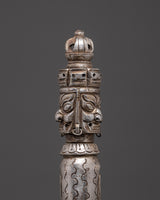
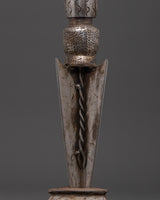
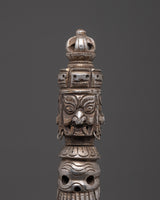
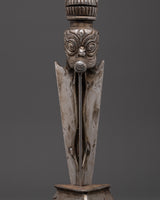

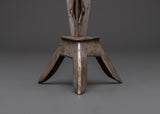
Sacred Ritual Phurba | Iron Dagger

100% AUTHENTIC

HANDMADE

FREE SHIPPING
Sacred Ritual Phurba for Altar | Tibetan Ritual Dagger
--------------------------------------------
Size: 48cm (Height) x 16cm (Width)
Weight: 2.71kg
Materials: Iron Body
--------------------------------------------
About The Ritual Item :
This Sacred Ritual Phurba for Altar (48cm x 16cm, 2.71kg) is an effective tool in Tibetan Buddhist rituals for requesting protection, dispelling negative energy, and enhancing spiritual practice. The Phurba, a symbol of tremendous compassion and transformational force, has long been employed by practitioners and spiritual teachers to help them overcome illusions and mental barriers.
This ceremonial dagger, crafted from iron, represents strength and purpose. Its presence on an altar or in a sacred area acts as a spiritual anchor, symbolizing the abolition of ignorance and the opening of a path to clarity, insight, and awakened awareness.
The 48cm height and 16cm width make this Phurba the perfect size for altar display or use in meditation rituals. Its weight (2.71kg) adds a sense of grounded power to its presence, making it not only a functional ritual tool but also a striking spiritual artifact. Whether used for personal meditation, ceremonial practices, or as part of your Buddhist altar decor, this Sacred Phurba serves as a constant reminder of the transformative power of wisdom, protection, and spiritual discipline.
Introduction To The Phurba :
The ceremonial dagger (Sanskrit: Kila; Tibetan: phurba) is essential for expelling evil and is considered particularly effective in neutralizing the forces obstructing Tantric Buddhist practice. It has ancient origins, first appearing in the Indian Rig Veda as the core blade of the vajra used by Indra to destroy the primordial cosmic snake Vritra. Kila, derived from Sanskrit, was most likely associated with Vedic sacrifices. Meditation on the Vajrakila Tantra, an early Indian scripture first promoted in Tibet in the eighth century by Padmasambhava, one of the founding teachers of Tibetan Buddhism, is used to invoke the three-headed Vajrakila Buddha.
How to Set Up Your Buddhist Shrine?
Find a clean, quiet, and uncluttered spot.
Please set up an altar table and cover it with an altar cloth that calls to you.
Place your sacred item (statue, thangka, or a picture of Buddha) at the center.


